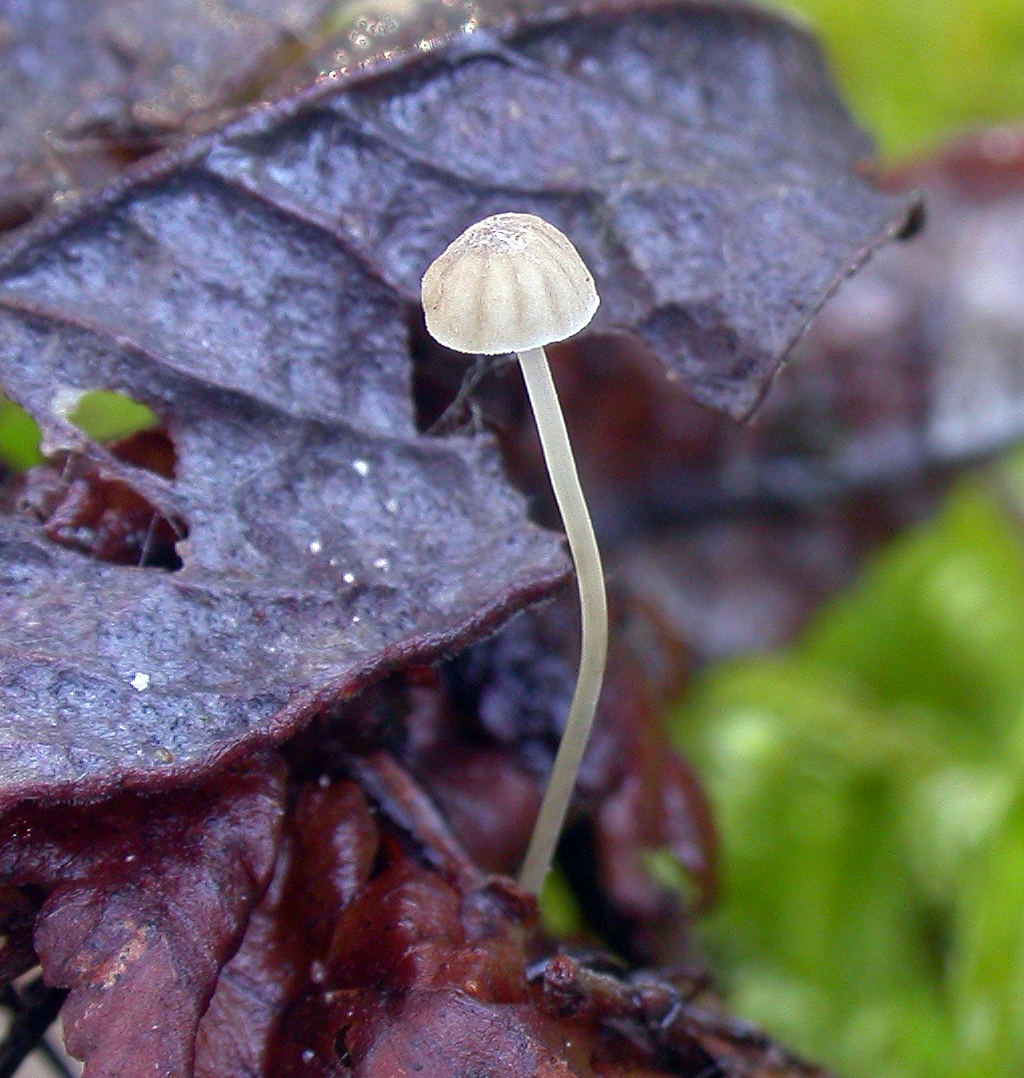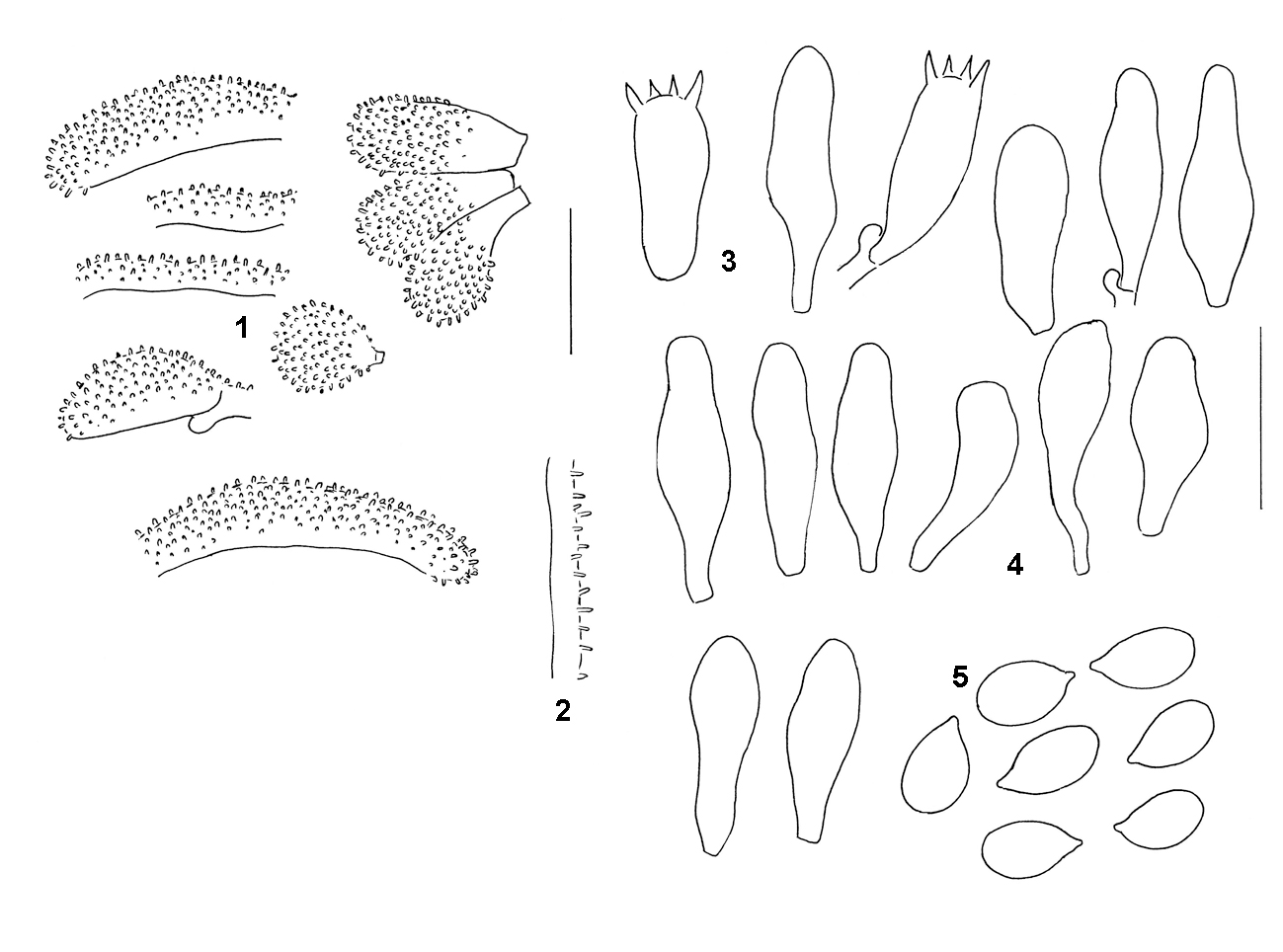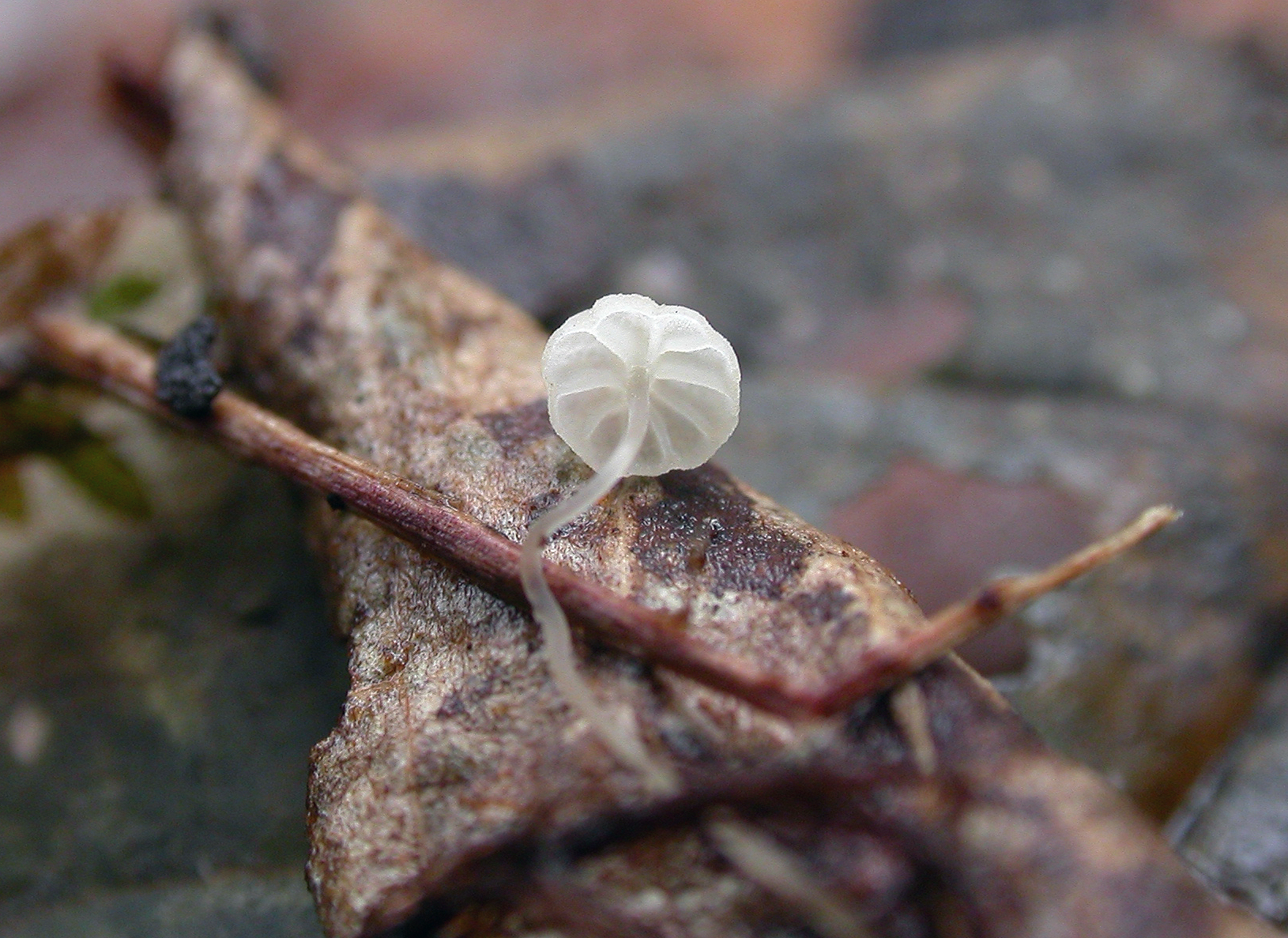Mycena guldeniana
Mycena guldeniana
Description
1. Hyphae of the pileipellis, 2. Hypha of the cortical layer of the stem, 3. Basidia, 4. Cheilocystidia, 5. Spores.
Cap 1-2 mm across, hemispherical, then conical to parabolical, flattening to convex, then more or less plano-convex to somewhat depressed, papillate or not, pruinose, glabrescent, shallowly sulcate, hardly translucent-striate, pale brown to grey or dark grey, sometimes paler with dark grey to brown centre. Gills 4-8 reaching the stem, concave to convex, adnexed to broadly adnate, sometimes decurrent with a very short tooth, pale brown, pale grey to white, the edge paler to white. Stem 10-30 x 0.1-0.2 mm, cylindrical, equal, firm, pruinose, glabrescent, brownish grey to watery grey then more whitish; ± dark grey at the apex in younger specimens, often insititious but occasionally attached to the substratum by a whorl of radiating, flexuous, white fibrils. Odour and taste indistinctive. Basidia 18-33 x 7-11 µm, clavate, (2-) and 4-spored, with sterigmata up to 5 µm long. Spores 7.5-10 x 4.8-6.5 µm, Q = 1.3 - 1.9, Qav ˜ 1.6, broadly ellipsoid to pip-shaped, amyloid. Cheilocystidia 21-40 x 6-11 µm, occurring mixed with the basidia, cylindrical, subclavate or sublageniform, smooth. Pleurocystidia not seen. Lamellar trama dextrinoid. Hyphae of the pileipellis 5-10(-17) µm wide, densely covered with cylindrical, straight excrescences 1-3.5 x 0.5 µm; terminal cells up to 40 x 15 µm, clavate to subcylindrical, covered with short, straight excrescences. Hyphae of the cortical layer of the stem 1-7 µm wide, densely covered with cylindrical, sometimes more thorn-like, straight excrescences 1-6 x 0.5-1 µm; terminal cells present at base, clavate, 26-35 x 5-10 µm, densely covered with cylindrical excrescences 1-4 x 0.5-1 µm. Clamps present in all tissues.
Ecology and distribution
Solitary or in groups on fallen Salix leaves (e. g. S. lapponum), and occasionally on partly buried twigs, in alpine sites. Summer to autumn. Only known from Norway, where it is locally not uncommon, but overlooked because of the tiny size and the inaccessible habitats.


